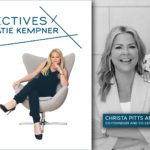By Alexander Burkard, Senior Account Executive, Advertiser Solutions, LATAM at PubMatic
In the digital advertising space, the concept of curation has taken center stage for marketers aiming to drive more transparent and effective outcomes. While not a new concept, curation’s evolution in recent years signals a notable shift in how inventory and audiences are packaged for advertisers.
This shift increasingly positions curation on the sell-side, where data can be applied much closer to publisher inventory. By embracing this new era of curation, LATAM marketers can unlock better outcomes, greater transparency, and improved efficiency.
Unpacking Curation
At its core, curation refers to the strategic packaging of inventory and audiences by identifying premium ad spaces, layering on KPIs that can be informed by audience data, demographics or other objectives and creating targeted deals tailored to buyers’ needs.
Historically, curation tended to happen on the buy side, often through DSPs’ data marketplaces. More recently, however, the shift toward the sell side has gained momentum because of how well-positioned publishers and sell-side partners are when it comes to access the full breadth of premium internet inventory white harnessing first-party data or important contextual signals.
The Key Curation Players
Curation is a collaborative effort involving the various industry players, each bringing unique value to the process:
- Agency Holding Companies: Leveraging their scale and resources, they create curated packages that align inventory with broad strategic goals for their clients. They emphasize efficiency and negotiated access to data and premium supply.
- Independent Agencies: Known for their agility, independent agencies often excel in delivering highly tailored curation strategies. Their focus is on crafting bespoke solutions for specific client needs.
- Trading Desks: As centralized programmatic hubs, trading desks curate inventory by leveraging their technology to layer on data and streamline access to high-performing supply.
- Data Providers: Enhancing curated inventory with actionable insights, these players integrate audience data to maximize targeting precision.
How SSPs Support Curation
Sell-side platforms (SSPs) are pivotal to the success of curation efforts. With their direct publisher relationships and technology infrastructures, SSPs address some of the most pressing challenges facing buyers today:
- Technology: Many SSPs now offer user interfaces that connect buyers directly with publishers to facilitate curated deals. These platforms provide buyers with access to high-quality inventory while incorporating tools for optimization and transparency.
- Service: SSPs also provide hands-on support through dedicated service teams. These experts assist buyers with deal creation, troubleshooting, and campaign optimization, ensuring curated packages meet performance expectations.
By addressing concerns such as the waning relevance of third-party cookies, brand safety risks, wasted ad spend on low-quality sites, and underperforming inventory, SSPs are solidifying their role as key partners in the curation process.
What Distinguishes a Strong Curation Partner
Not all curation partners are created equal. The best partners provide:
- Inventory Scale: Access to a wide range of premium inventory ensures curated packages can meet diverse buyer needs.
- Publisher Direct Integrations: Strong relationships with publishers enable better quality control and transparency, while ensuring access to premium, first-party data.
- Data Partnerships: Thoughtful integrations with leading data providers and identity solutions enhances targeting precision and audience insights.
- Fee Transparency: Clear, upfront pricing fosters trust and minimizes hidden costs.
- Local Language Support: As curation increasingly scales globally, the ability to operate in multiple languages ensures relevance and accessibility for buyers across regions.
- DSP Integrations: Seamless compatibility with demand-side platforms (DSPs) ensures curated packages are easily accessible and actionable within buyers’ preferred workflows.
How Buyers Benefit from Curation
The growing emphasis on curation offers a range of tangible benefits for marketers, including the following.
- Targeted Supply: Curation ensures that inventory is aligned with specific campaign objectives, reducing waste and improving the relevance of ad placements.
- Brand Safety: By focusing on high-quality, premium inventory, curation minimizes exposure to made-for-advertising (MFA) sites and other low-quality environments.
- Improved Quality: Working with curated packages means gaining access to inventory that has been vetted for performance and engagement, leading to better outcomes.
- Operational Efficiencies: SSPs can help streamline the curation process, saving buyers time and resources while delivering optimized inventory at scale.
- Deeper Troubleshooting: With SSP service teams involved, buyers benefit from faster and more thorough issue resolution.
Curation isn’t just another layer in the media-buying chain—it’s a strategic, next-level approach to addressing the complexities of modern digital advertising. By shifting more responsibility to the sell side, marketers can benefit from curated inventory and audience packaging that’s efficient, transparent, and performance-driven.
As the industry continues to navigate challenges like privacy regulations, identity shifts, and brand safety concerns, curation offers a path to greater ROI. Done right, it transforms ad buying from a fragmented process into a seamless, results-oriented strategy, ensuring that every dollar spent delivers maximum impact.











